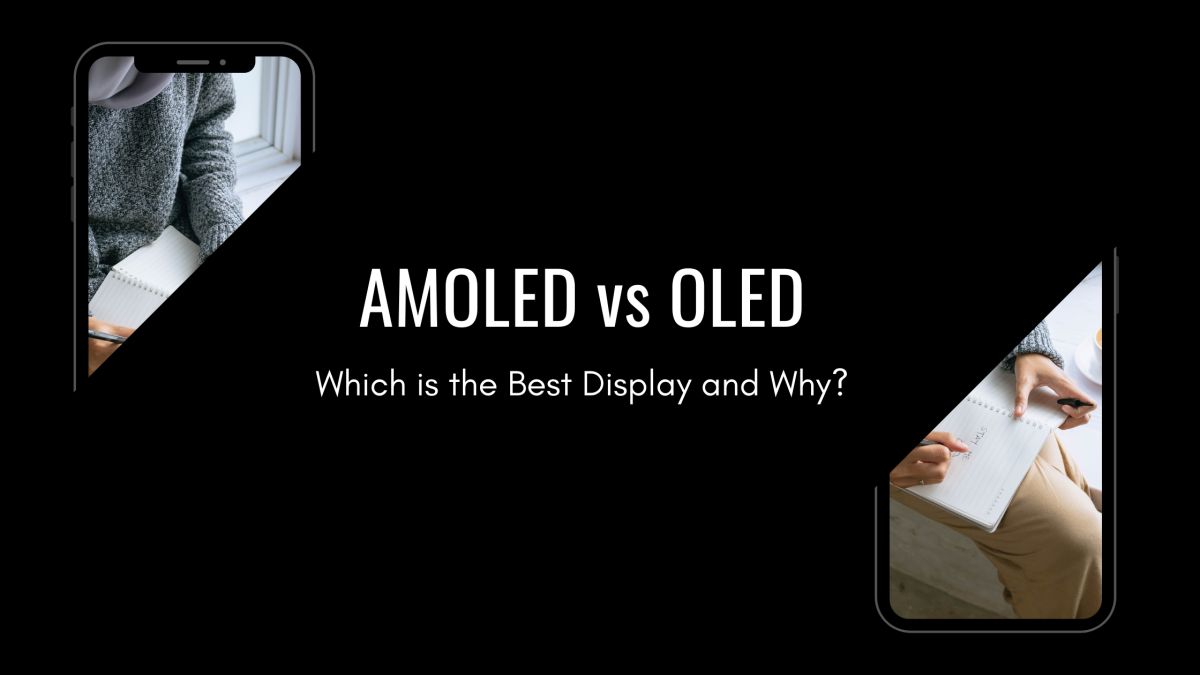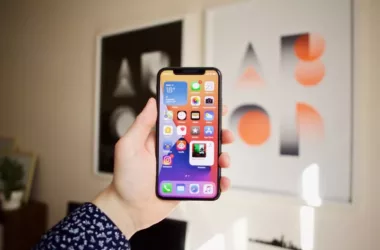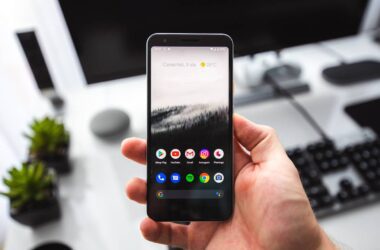Display technologies have constantly been changing to give users a more realistic feel. Smartphones are one of those devices to quickly adapt several display technologies such as AMOLED, OLED, LCD, and more. When buying a smartphone, we go through a list of specifications such as display, battery backup, storage, and memory; now, the confusion is with the display technologies; which is the best? In this comprehensive guide, we discuss the AMOLED vs OLED differences, the best option, and the hype.
Also read: 10 Best Video Editing Apps That You Should Have on Your Phone
AMOLED vs OLED Display | Differences

When you buy a new smartphone, you might often get confused with the best smartphone display. Options like AMOLED, OLED, IPS, and LCD often confuse buyers, especially when buying online. This is because you cannot actually see the display when buying online. If you are confused with displays, here is what you need to know about AMOLED and OLED displays.
| OLED Display | AMOLED Display |
|---|---|
| Relatively older technology compared to AMOLED display. | Newer Display technology. |
| Uses current passing through organic material to brighten the screen. | Uses active-matrix along with the current passing through organic material. |
| Less expensive than AMOLED. | AMOLED phones or devices are expensive. |
| OLED displays are flexible in size; you can find them in larger display sizes such as television, which previous technology fails in—LCD. | AMOLED displays are flexible in size, and you can use them in almost any variable size. |
| Consumes less power. | Consumes more power. |
| Organic light material that brightens up when the current passes through it. | Same mechanism as OLED technology but with the additional layer of TFTs to control the current in each pixel. |
What is an OLED Display?
OLED display, an abbreviation for Organic Light Emitting Diode, is a display screen emitting light using organic materials. These kinds of displays are better than TFT screens and are used to display vibrant colours. Much better than the LCDs, OLED is thin, small, and flexible in nature.
In the OLED display, the screen is visible when the current passes through diodes made of organic materials. Besides, OLED screens are easy to produce and do not use the backlighting technology that the old LEDs use.
OLEDs are actively used in smartphones because they consume less power than older technologies. In addition, the OLEDs use less power when displaying dark colours, which is also a reason why black backgrounds or colours on OLED screens are more beautiful and vibrant.
Also read: Anonymous Chat Apps: 12 Apps to Chat With Strangers.
Advantages of OLED Displays
- OLED display do not need backlight technology.
- The OLED display are light in nature due to light emitting layers.
- These display are easy to produce comparable to older display technologies.
- OLEDs are best in dispaying vibrant colors.
- Consume less power when displaying dark colors.
- Lighter, thinner and flexible displays that can be made into larger sizes unlike other display technologies.
- OLED display screens are cheaper and faster in response to AMOLED display screens.
Disadvantages of OLED Displays
There are a few disadvantages of smartphones, televisions, or other smart devices that have OLED displays, a few of them are –
- OLED are not water resistant and if you accidentally drop them in water, you might have to get a replacement. Besides, changing a display screen with a new one is a costly process.
- Though vibrant, OLED have variation in color balance.
- OLED lifespans are shorter than LED and LCD displays.
- The OLED display are not great with direct sunlight.
- Suspictible to luminance degradation.
Applications of OLED Displays
OLEDs are almost used by a few dozens of smartphone models that we use each day.
- OLEDs are best used in televisions.
- You can find the OLEDs in most of the budget smartphones.
- Hardware models such as computer monitor use OLED for display screen.
- Digital cameras have been using OLED for a long time.
- Smartwatches with ability to do a lot more things other than tracking use OLED display screens.
- Works best as OLED light panels that can make flexible, tunable, and transparent light panels.
Also read: How to Enable Google Dark Mode on Android and IOS Devices?
What is an AMOLED Display?
AMOLED (Active Matrix Organic Light Emitting Diode) displays are improved versions of OLED display screens. Quoting technically, AMOLED displays are better than OLED because they use an active matrix system along with the current passing through each pixel.
Meaning, the current passes through each pixel similar to the OLED display, but a thin film transistor (TFT) controls it. Two TFTs control the start and stop charging of the storage capacitors and brighten the pixels to display the image on the screen.
AMOLED displays are relatively newer display technologies and can be found in some of the best mobile phones. For example, most of the Samsung and Realme phones have AMOLED displays. The power consumption of AMOLED display is less and more impressive, but there is also an upgraded version of AMOLED display; Super AMOLED display.
Advantages of AMOLED Display
- AMOLED display can be embedded into any display.
- Faster refresh rate compared to PMOLED display.
- Better viewing angle compared to IPS LCD.
- Consumes less power than other predecessors.
- Higher contrast ratio and thinner physical profile.
- Overall display quality is much better than other previous display technologies.
Also read: 10 Best Free Logo Maker App for iPhone & iPad
Disadvantages of AMOLED Display
- Display quality degrades with time.
- AMOLED display are pricey.
- Shorter lifespan compared to other display technologies.
- Much poor in outdoor visibility.
- Are vulnerable to water damage.
- Display quality issues.
Is AMOLED or OLED Display Screen Bad for Eyes?
The fact that AMOLED, OLED, Super AMOLED, and PMOLED displays do not use backlight technology, they are safe for the eyes. Besides, they emit radiation from the organic diodes, which ensure they are less harmful.
These days, almost all smartphones have the night mode feature and AMOLED and OLED displays work best. Such display technology only brightens certain pixels and not the entire screen as such LCDs. This is a reason why older phones were bad for eyes when used for a longer time during the nighttime.
However, it is best to know the nighttime mode is not completely safe for the eyes. They do make it easy to look at the screen but is no different from the harm caused by the regular screen light.
Also read: Can Private Browsing be Traced on iPhone – A Brutal Truth.
Which is Best AMOLED vs OLED Display Screens?

AMOLED display screens are much better than OLED display screens because of their working mechanism. Each pixel has its own transistor and capacitor, which only brightens up the pixels that are required. Besides, two TFTs are involved in controlling the charge and discharge of storage capacitors that make the display. Entirely speaking about the quality and performance of display Screens, AMOLED beats OLED screens with vibrant colours, less energy consumption, and low operating cost.
However, there are a few drawbacks of AMOLED, the quality of the AMOLED screen degrade with time, and you might want to replace the screen over a period of time. Besides, the manufacturing cost of AMOLED display screens is expensive, which is why if you are buying a smartphone with an AMOLED display, you are paying more for it.
There are a few common drawbacks of using AMOLED and OLED display screens. One such drawback is both the OLED and AMOLED display screens are vulnerable to water damage. Besides, both these display screens have shorter lifespans.
You may also like,
- How to Fix Among Us Disconnected from the Server Error | Android, IOS, & Steam
- Craigslist App For IOS and Android, Is it worthwhile to use?
- Tenor GIF keyboard for Android, IOS, and Mac – Best Gif Keyboard
Frequently Asked Questions
AMOLED and OLED displays use radiation from organic materials through which the current is passed. Besides, only specific pixels are brightened that are required for the display and not the backlight technology. Since there is no backlight technology involved, AMOLED and OLED displays are not too bad for the eyes.
To compare between AMOLED vs OLED display screens, AMOLED is better than OLED display screens but are also expensive.
OLED consumes less power and is thin and better than LED TVs, but latter technologies have outsmarted OLED in terms of performance. By far, OLED has a better viewing angle than the older device technologies, and with the introduction of AMOLEDs and newer displays, the prices have seen a downside on OLED screens.
OLED TVs last for about 100,000 hours which is approximately 54 years, with an average use of 5 hours every day. Besides, LED TVs last for approximately 22 years compared to OLED TVs.
We compared AMOLED vs OLED, and in our conclusion, we finally state AMOLED is the best smartphone display compared to OLED with vibrant, dark, and depth in colours. Besides, AMOLED uses lesser power and have better viewing angles. But also, AMOLED is expensive, and which is AMOLED Smartphones can mostly be found in the flagship arena.
Also read: iPhone Location Sharing – Everything You Need to Know
Conclusion – AMOLED vs OLED | Which is the Best?
The best display for TV, Smartphones, and other display devices is an AMOLED display. This is because it uses an active matrix display, less power consumption, more vibrant colours and better viewing angles. However, we also found that AMOLED display screens are expensive. There are much better and expensive display screens than AMOLED, such as Super AMOLED that are relatively newer.








